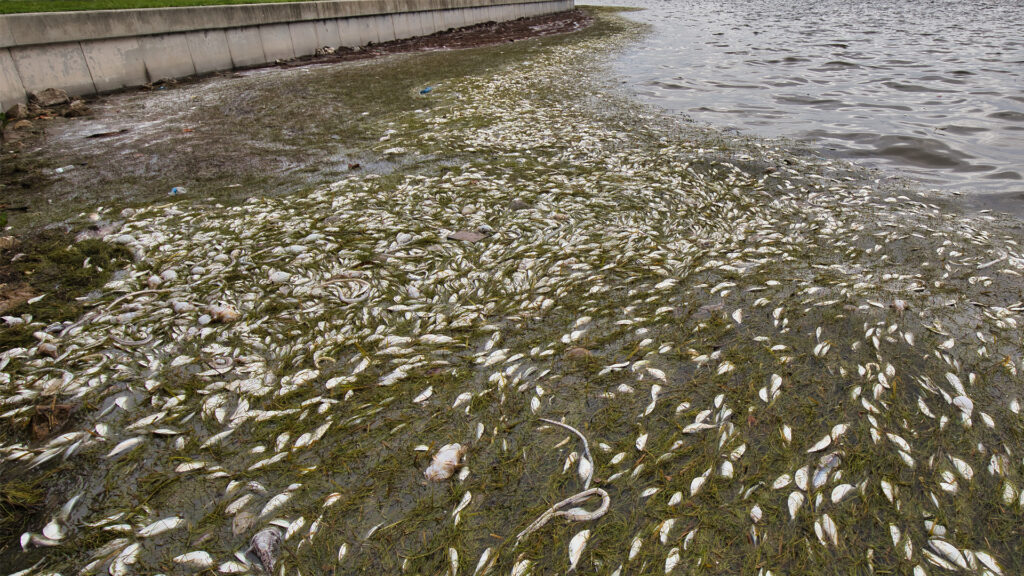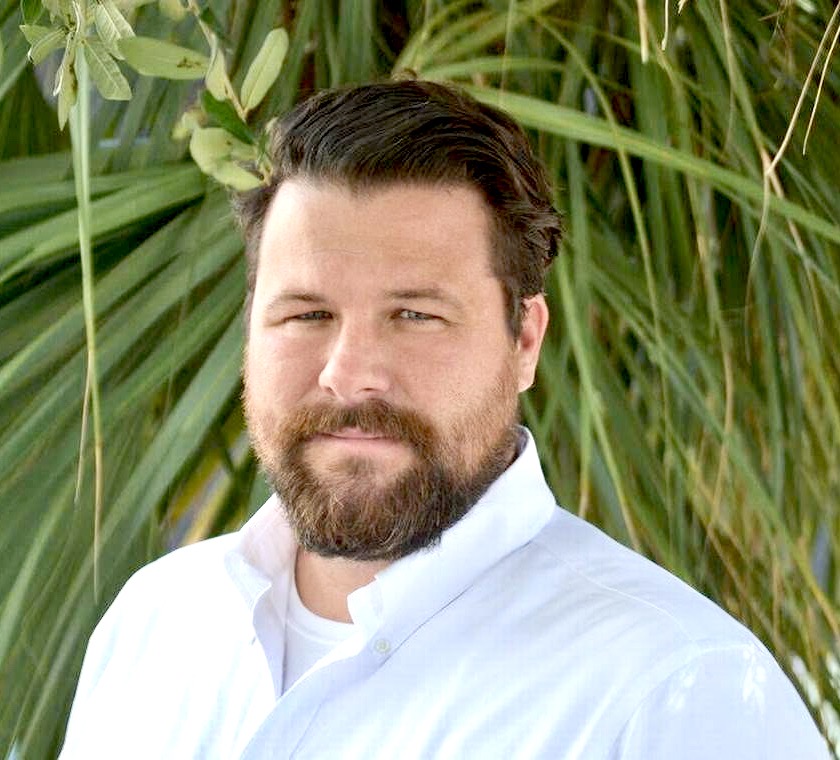By Jon Paul “J.P.” Brooker, Ocean Conservancy
As a coastal resident in Florida, the beach is the heartbeat of my community and a major focal point of our way of life. It’s our park, our playground, our spiritual connection to nature. But there are two words no one wants to hear before heading to the beach: red tide. And yet, over the past few years, Floridians have had to contend with some of the worst red tide blooms in recent memory.
Red tide is a natural phenomenon that has been occurring in the Gulf for centuries, if not thousands of years, with their impacts being recorded even by Spanish explorers in the 1500s. But as humans have altered the landscape and dumped too much pollution into our waterways, we’ve made red tide events worse: The blooms last longer, they’re bigger and they’re more severe.
The results are worse, too, including larger fish kills and greater losses of marine animals like dolphins, manatees and seabirds. Vulnerable human populations also experience more widespread and significant respiratory health concerns.

Over the past decade, Florida has seen some of the most devastating and long-lasting red tide blooms in recent memory. The 2017-2019 red tide event covered tens of thousands of acres of the Gulf and killed thousands of tons of fish and other marine wildlife, including dolphins, manatees and sea turtles. That event devastated local beach economies with tens of millions of dollars in hotel cancellations, thousands of layoffs of hard-working service sector employees and huge losses for charter boat captains, commercial fishermen and other coastal businesses like rentals and bait and tackle shops.
It is tremendously beneficial to Floridians and Florida businesses to know precisely when and where a red tide event will likely bloom. To do so, we rely on scientific monitoring systems managed by the National Oceanic and Atmospheric Administration. The billions of dollars in proposed cuts to NOAA would severely impact red tide monitoring and make it difficult for us to prevent and mitigate impacts to human health and the economy.
For example, suppose we know a severe red tide event will likely occur in a specific area. In that case, we can warn community members to avoid the beach and dedicate resources to remove dead fish, not only because they are unpleasant to beachgoers but because removing dead fish can help alleviate the bloom by eliminating a food source for the red tide microorganisms.
In 2005, during the President George W. Bush administration, scientists created the Gulf of Mexico Coastal Ocean Observing System, now called the Gulf of America Coastal Observing System, a network of monitoring, forecasting and prediction tools across the Gulf — the only system of its kind and home to the red tide respiratory irritation forecast system.

The system provides timely, reliable and accurate information, including the coordination and maintenance of 1,730 scientific sensors across five states, serving over 15 million Gulf residents and nearly 60 data partners. The coastal observing system is part of a broader network of 11 national-regional ocean observation partnerships managed by NOAA known as the Integrated Ocean Observing System, which the administration has proposed to fully defund as part of sweeping cuts to the agency.
Budget cuts to NOAA — and elimination of the Integrated Ocean Observing System — would put Gulf of Mexico Coastal Ocean Observing System services on the chopping block with major negative impacts to community health, coastal ecosystems, fisheries and the coastal economy.
And Florida is not the only state staring down the barrel of dangerous algal blooms. From the Great Lakes to Alaska, toxic algae appear more frequently or last longer because of man-made pollution from land and extreme weather events. In these places, we rely on NOAA’s scientists and technology to monitor and prevent the’ worst impacts of algal blooms.
To keep our coastal economies strong and Americans healthy and safe from red tide, we must continue to support NOAA and its vital ocean monitoring systems.
Jon Paul “J.P.” Brooker is Ocean Conservancy’s director of Florida conservation. He lives in St. Petersburg. This opinion piece was originally published by the Tampa Bay Times, which is a media partner of The Invading Sea.
Sign up for The Invading Sea newsletter by visiting here. To support The Invading Sea, click here to make a donation. If you are interested in submitting an opinion piece to The Invading Sea, email Editor Nathan Crabbe at nc*****@*au.edu.



